SpaceX, that name surely rings a bell for you! But do you remember well the goal of this American company with its Falcon 9 launcher, and more particularly with the latest version, the Block 5? The aim is to reuse the first stage of the rocket about ten times without major repairs, and then up to a hundred times with more extensive refurbishment. However, where it gets tricky is that SpaceX has never flown a booster more than twice. A bit inconvenient when promising a significant price reduction through reusability. But now that the company has mastered the second flight, it’s time to move on to the third. And precisely, on December 3, 2018, SpaceX achieves a new feat by relaunching for the third time a first stage of its Falcon 9 launcher! And equally impressive, it’s not one, not two, not ten, but a whopping 64 satellites that were onboard the rocket!
Spaceflight, the company behind this mission
Spaceflight is a service created by Spaceflight Industries, an American company. The purpose of the latter is to simplify access to space. Indeed, they believe that space exploration is essential for improving life on Earth. Thus, they offer two services: BlackSky and Spaceflight. BlackSky aims to be a constellation of 60 satellites that would provide a high-definition map (with a resolution of 1m² per pixel) and almost real-time coverage of almost the entire Earth’s surface. On the other hand, the Spaceflight initiative aims to simplify the launch of satellites. They take care of finding the launcher that matches the satellite’s needs, without blowing the budget and without having to wait too long. So far, 140 satellites for 32 different countries have been launched thanks to Spaceflight.
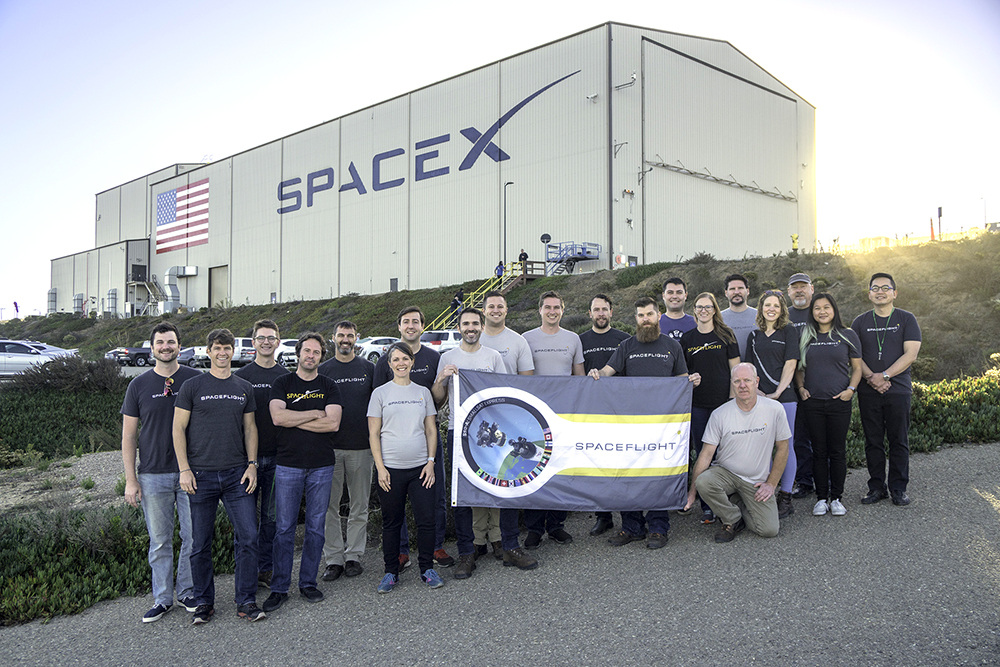
The mission on December 3 is therefore commissioned by the latter company. They were responsible for gathering the 64 new satellites from 17 different countries, integrating them onto a platform for launch, and commanding the flight on a Falcon 9. The objective of the Falcon 9 is to place all satellites into a heliosynchronous orbit at an altitude of 575km and inclined at approximately 98°. The local time at the descending node of the orbit will be 10:30. The node of an orbit is the point of intersection between the object’s trajectory and the equatorial plane of the body around which it orbits (in this case, the Earth). However, there are two nodes: the ascending node, when the satellite passes from the south side to the north side, and the descending node when it passes from the north side to the south side. Given that the orbit of this mission is heliosynchronous, the local time at the descending node remains constant, which is particularly useful for Earth observations.
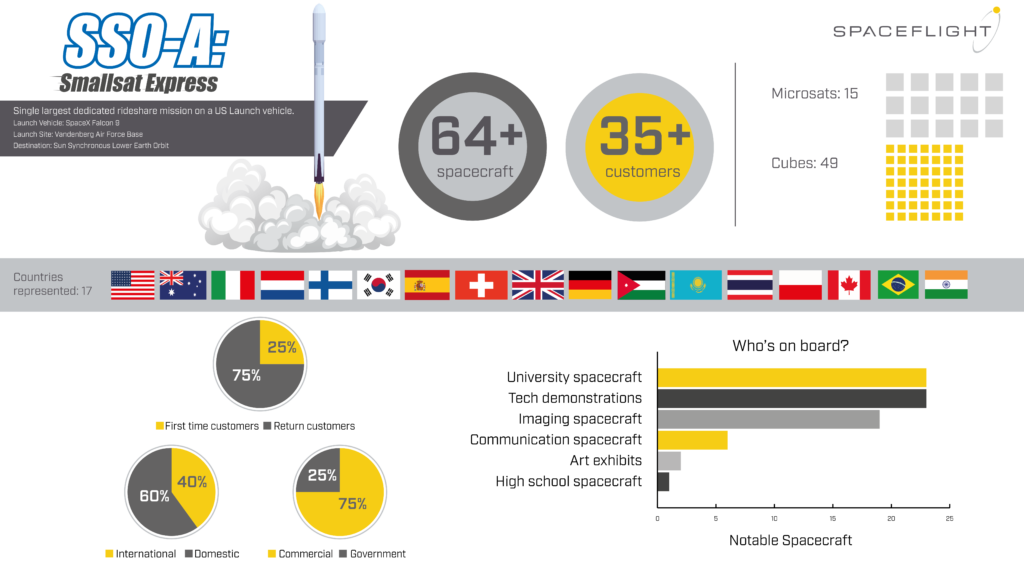
Among the 64 passengers on the flight, there are a large number of Earth observation satellites, as well as technology demonstrators and many others. Here are some of them:
ESEO: Short for European Student Earth Orbiter, ESEO is a microsatellite developed by European students. It is part of projects from the ESA Education Office (European Space Agency). It is the third object of the ESA’s Education Satellite Program. Its purpose is to image the Earth, measure radiation, and test new technologies that will be used for future missions of this program. On board ESEO, you’ll find a micro camera, radiation sensors, two antennas for use by amateur radio operators and as training tools for students, a GPS receiver to try to precisely determine its orbit, and a sail designed to deorbit the satellite more quickly. ESEO measures 33 x 33 x 63cm, weighs 44kg, and has an orbital lifespan of approximately six months.
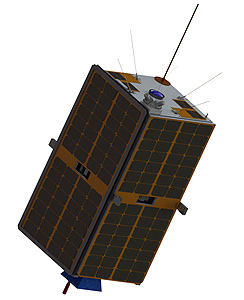
eXCITe (eXperiment for Cellular Integration Technologies) is a microsatellite developed by DARPA, an agency of the United States Department of Defense. Its purpose is to test a system of “satlets.” These satlets are small satellites that can assemble themselves to form more complex structures and thus perform various missions. They share electricity, heat, data, etc. Each satlet measures approximately 20 x 20 x 10cm. DARPA’s ultimate goal would be to have a larger satellite in orbit that would serve as a satlet factory and could assemble various satellites before releasing them. However, eXCITe is not yet this factory. It is already assembled with 14 satlets to verify that the interactions between all these building blocks work well. It weighs 155kg and will have a lifespan of two to nine weeks. eXCITe also carries with it the SeeMe satellite for another DARPA project: to rapidly and precisely image the Earth.
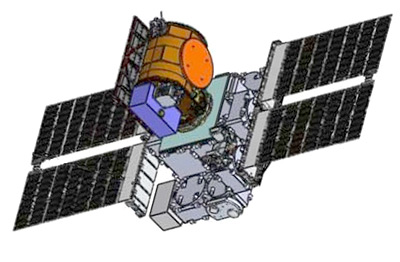
FalconSAT-6: This other microsatellite was developed by the US Air Force Academy (USAFA) and its main objective is to test and demonstrate the effectiveness of multi-thrust systems. The primary payload is the SPCS-2 Hall effect thruster. FalconSAT-6 also includes an experiment accompanying the SPCS-2, the CME, which will measure contamination resulting from the firing of this thruster, ground handling during testing and integration, post-encapsulation environments, and outgassing in orbit of certain materials. Another instrument named HIPE, developed by USAFA, will measure the propagation of certain waves in the ionosphere. Finally, the AFRL experiment will test new, more efficient solar panels as well as flexible circuits. This satellite has a total weight of 181kg.
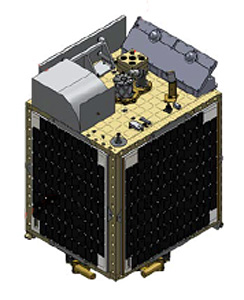
Orbital Reflector: What’s the new form of modern art? Sending a massive reflective structure into space! That’s the idea artist Trevor Paglen had in collaboration with the Nevada Museum of Art. Orbital Reflector is a 3U CubeSat that, once in orbit, will deploy a large 30m structure made of a lightweight material similar to mylar. This structure will self-inflate to become a large reflector. From the ground, it should be possible to see the satellite as a point as bright as the stars of the Big Dipper. However, this type of satellite is starting to become more common (we’ve already seen Humanity Star during the second Electron flight), and astronomers are concerned about light pollution directly in space, especially since the International Space Station is already very visible from the ground.
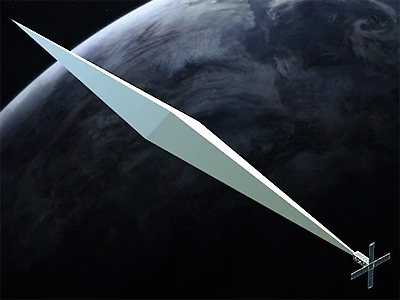
PW-Sat 2: This Polish CubeSat is a technological demonstrator. Its objective is to test a sail that would enable CubeSats to re-enter the atmosphere more quickly once their mission is completed. PW-Sat 2 also features two cameras: one to confirm the deployment of the sail and another that will serve as a prototype solar sensor, a type of sensor used to determine the satellite’s attitude.
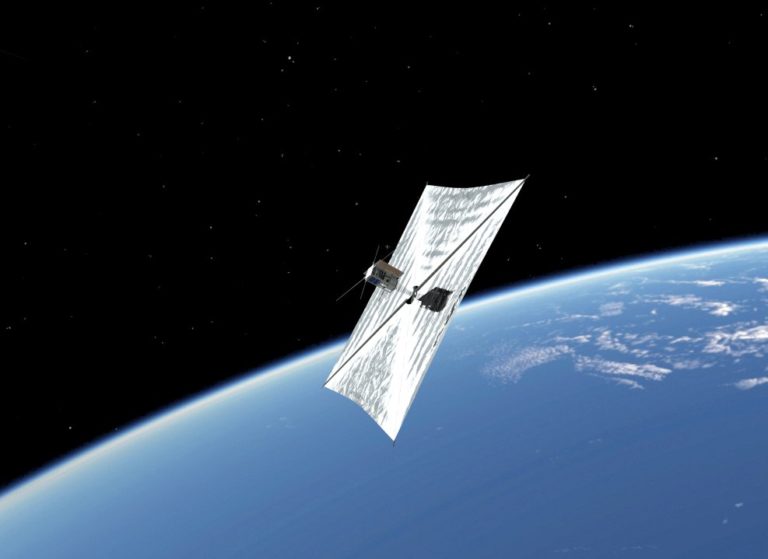
ROSE 1: ROSE 1 is a 6U CubeSat (30 x 20cm) that will serve as a test platform for the Phase Four RFT (Radio Frequency Thruster) plasma thruster. If this engine operates successfully, it will become the very first plasma engine to equip a nanosatellite. ROSE 1 will therefore attempt to demonstrate that the Phase Four RFT engine is capable of withstanding launch and performing orbital corrections to modify the satellite’s trajectory.
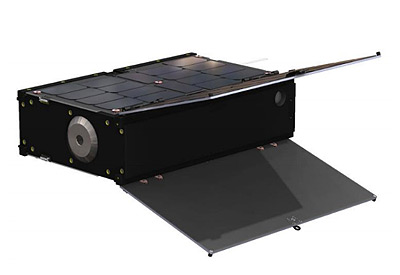
All these satellites are placed on an adapter developed by Spaceflight, consisting of four parts: the ESPA, which carries microsatellites and CubeSats, the CubeStack, which transports CubeSats, the Hub, to which microsatellites are attached, and the MPC, which carries microsatellites on its external part and up to twelve 12U CubeSats on its internal part. As shown in one of the images below, the deployment of satellites follows a very precise order: First, the ESPA, the CubeStack, and the Hub separate from the second stage of the Falcon 9. Then, the microsatellites from the external part of the MPC are released, and finally, the internal part of the MPC is detached. All the satellites aboard the first block are then released, as are those on the internal part of the MPC.
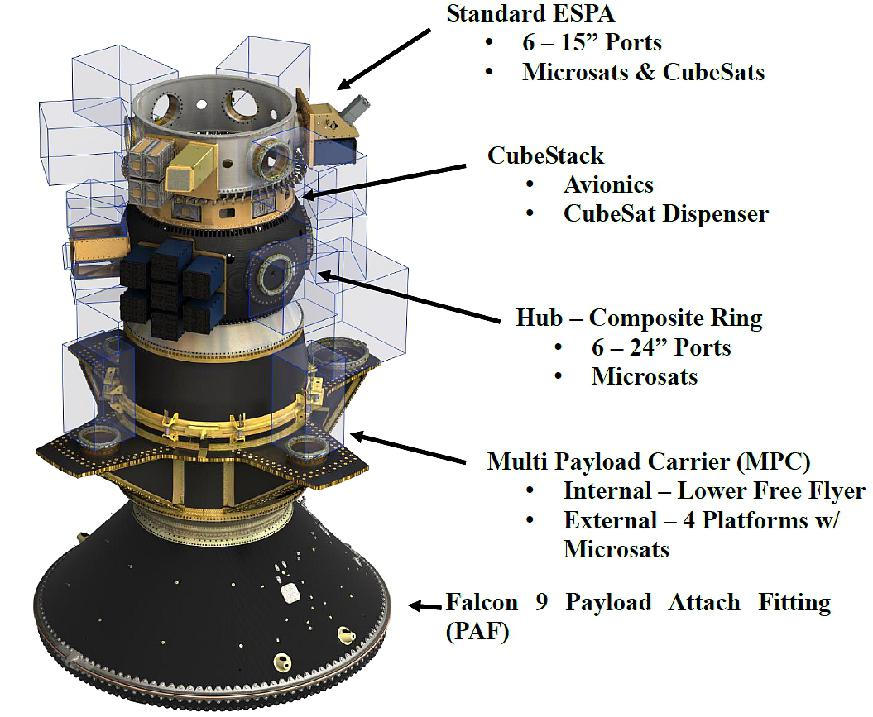
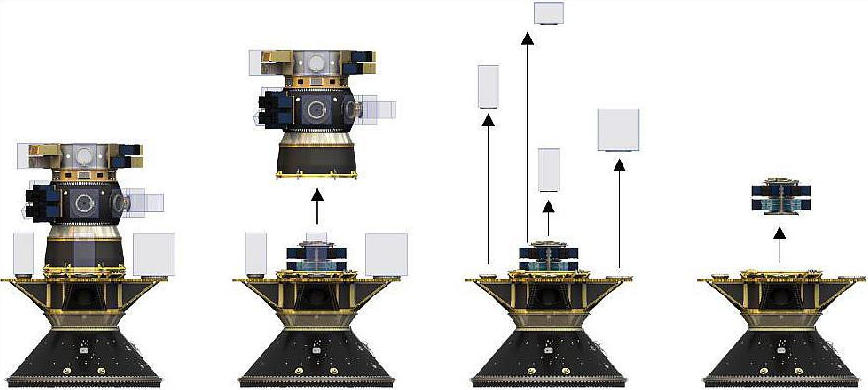
Third flight of a Falcon 9 first stage
For the very first time, a rocket stage has taken off for its third flight. This achievement is credited to SpaceX, which has decided to move to the next stage now that they have successfully completed 17 flights with a booster that had already flown once. For this flight, it was stage B1046 that resumed its flight for the third time. This particular stage notably participated in the very first launch of the Falcon 9 Block 5 in May 2018 to orbit Bangabandhu-1, and then in the launch of the Merah Putih satellite in August 2018. There are therefore 3 or 4 months between two reuses. But this pace could be accelerated with the experience SpaceX is gaining. Indeed, it is logical that this booster took relatively long before flying again: it was the first Block 5, and it was therefore preferable to inspect it thoroughly to ensure that all systems had withstood the first and second flights.
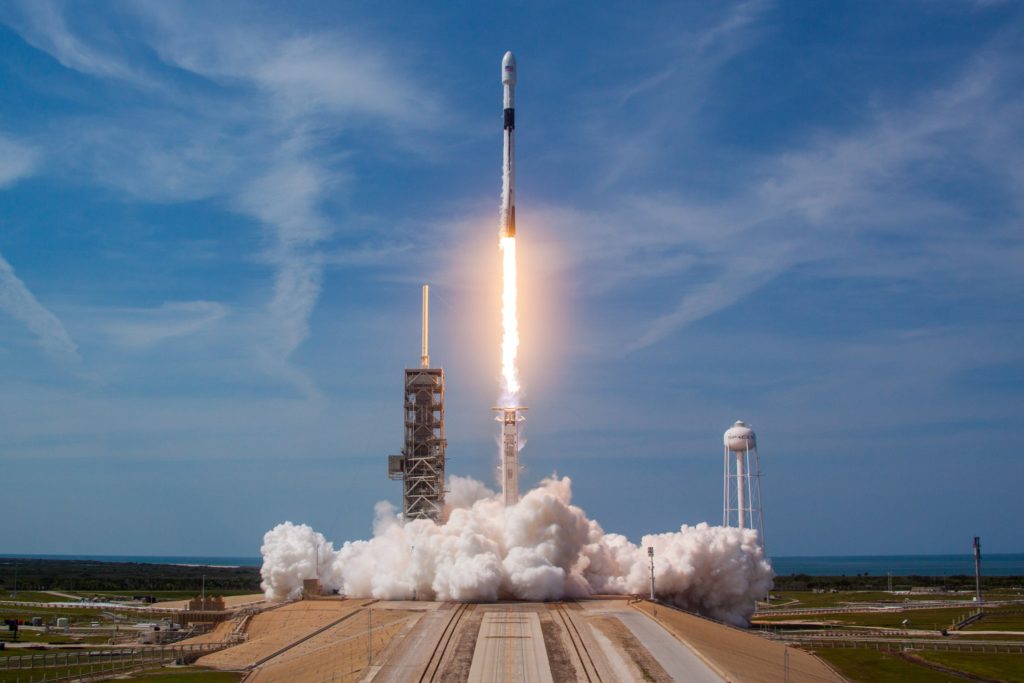
Fun fact, the B1046 is the first stage to launch from three different launch pads: Bangabandhu-1 took off from Launch Pad 39A at Kennedy Space Center (KSC), Merah Putih launched from Launch Pad 40 at Cape Canaveral Air Force Station (CCAFS), and SSO-A launched from Launch Pad 4 at Vandenberg Air Force Base (VAFB). Indeed, for this December 3rd flight, the Falcon 9 took off from Vandenberg, on the West Coast of the United States. This launch pad enables them to place satellites into polar or near-polar orbits since the southward trajectory is clear, unlike the launch pads on the East Coast (where Cuba lies just to the south).
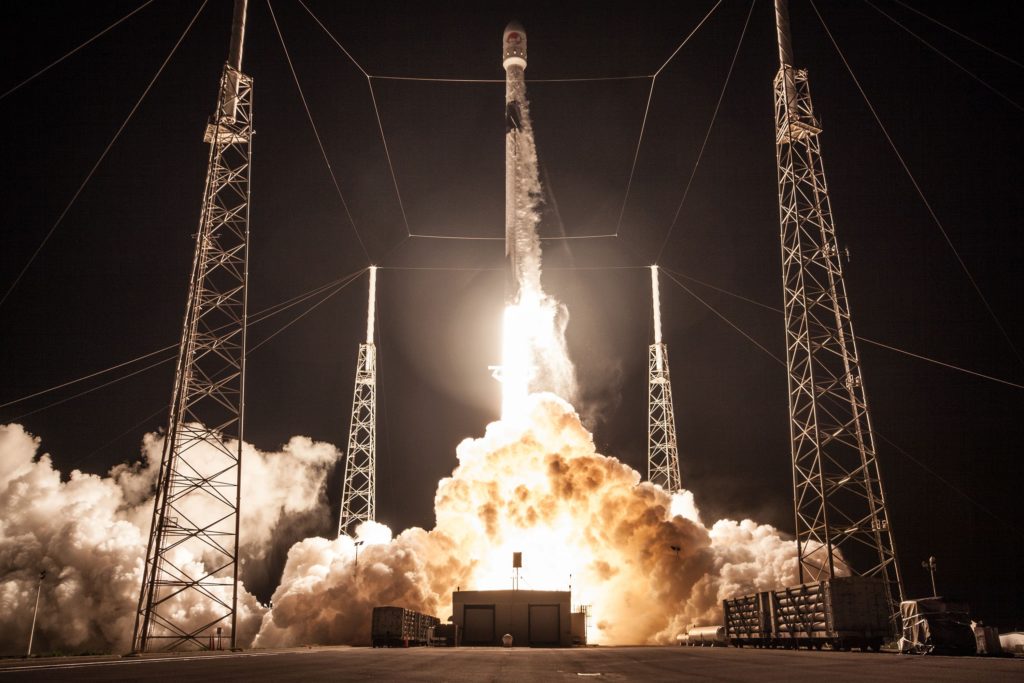
Given its launch site and the payload mass carried, the booster B1046 could have returned to land at Landing Zone 4 right next to the launch pad. So why choose to land it on the barge “Just Read The Instructions” (JRTI) offshore in the Pacific? Simply put, another very important launch is in preparation at Vandenberg Air Force Base. This launch is for the NROL-71 satellite aboard a Delta IV Heavy (the same rocket that launched the Parker Solar Probe in August). This satellite is for the United States National Reconnaissance Office (NRO). It is therefore too risky to attempt a ground landing at the base and risk a malfunction that could destroy this valuable secret satellite. Indeed, the hangar where this Delta IV Heavy is prepared is only 5.8km from Landing Zone 4. SpaceX had prepared the necessary authorizations for a ground landing in case its launch was postponed and NROL-71 launched first. The launch of SSO-A was indeed delayed, but so was that of NROL-71. In the end, SSO-A launched on December 3rd and NROL-71 is scheduled for December 7th: impossible to land on land.
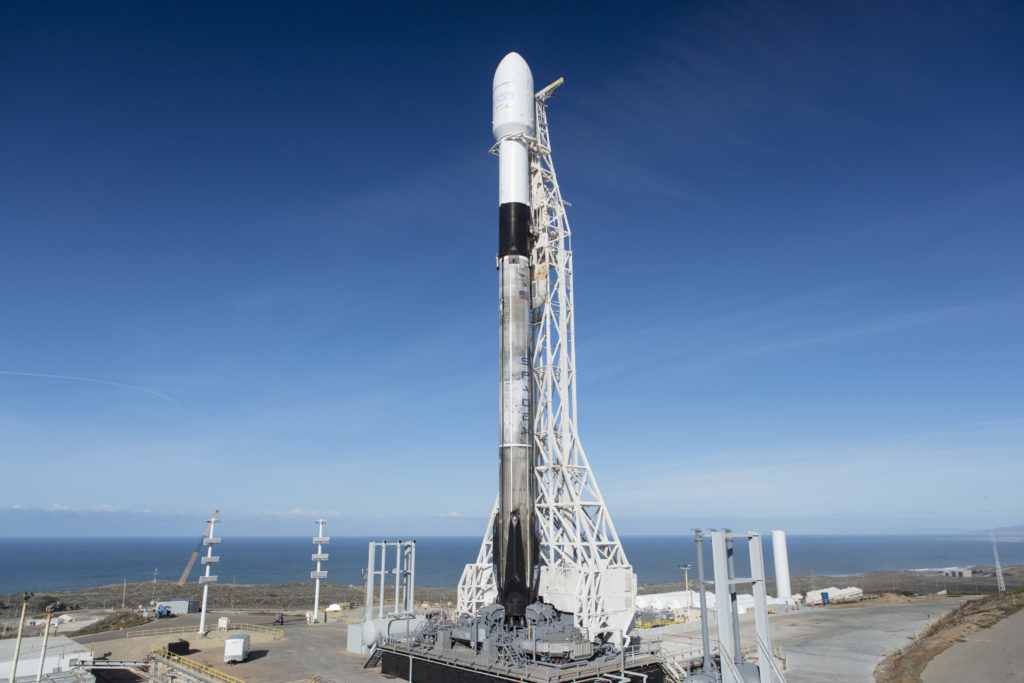
In the end, with this flight, SpaceX takes another step towards advanced reusability of launchers. In a few months, we will surely see other boosters completing their third flight with flying colors. And SpaceX will most likely even reach the next milestone: the fourth reuse. It’s important to remember that re-flying a booster is still relatively new. The first time a Falcon 9 first stage flew for the second time was on March 30, 2017: just about twenty months ago. Since then, SpaceX has launched a reused booster almost every month. With a bit of luck, this same cadence will soon apply to the third flights of boosters as well.



